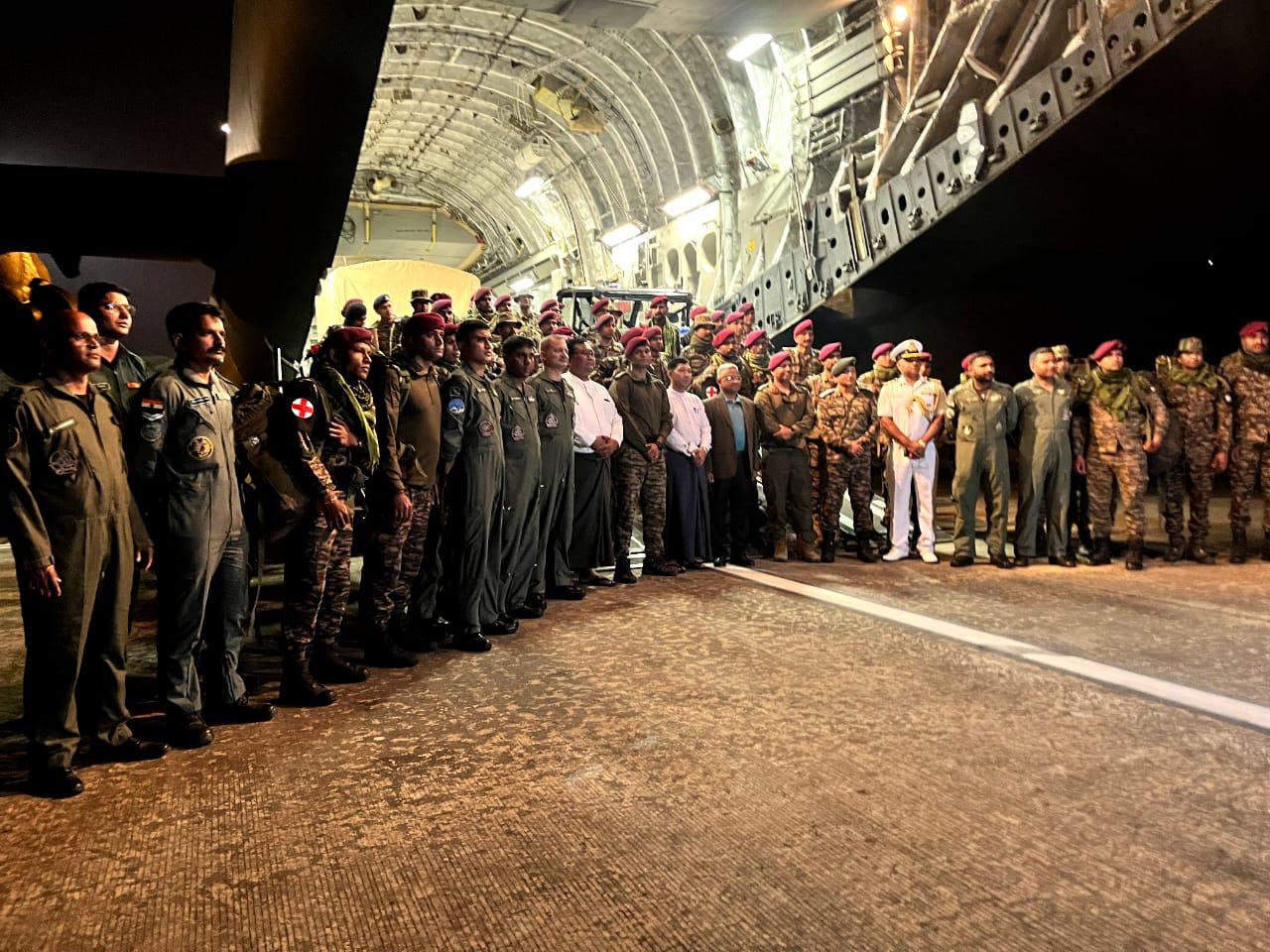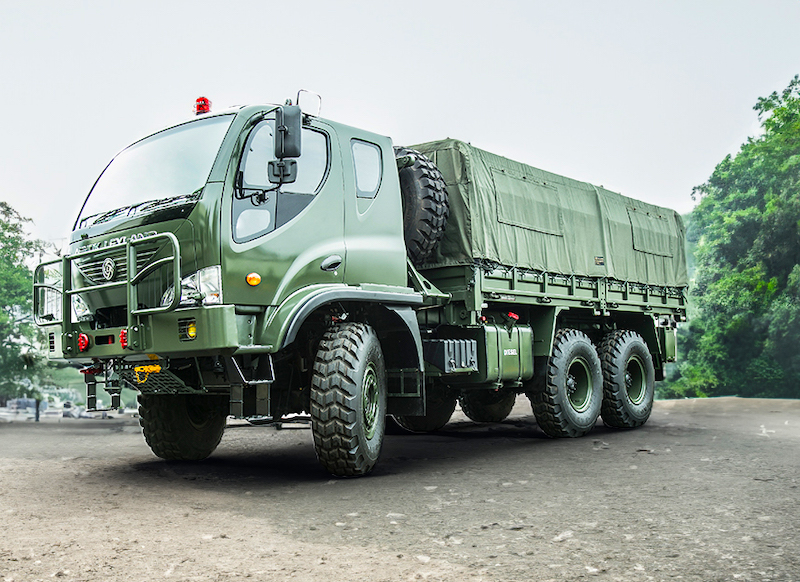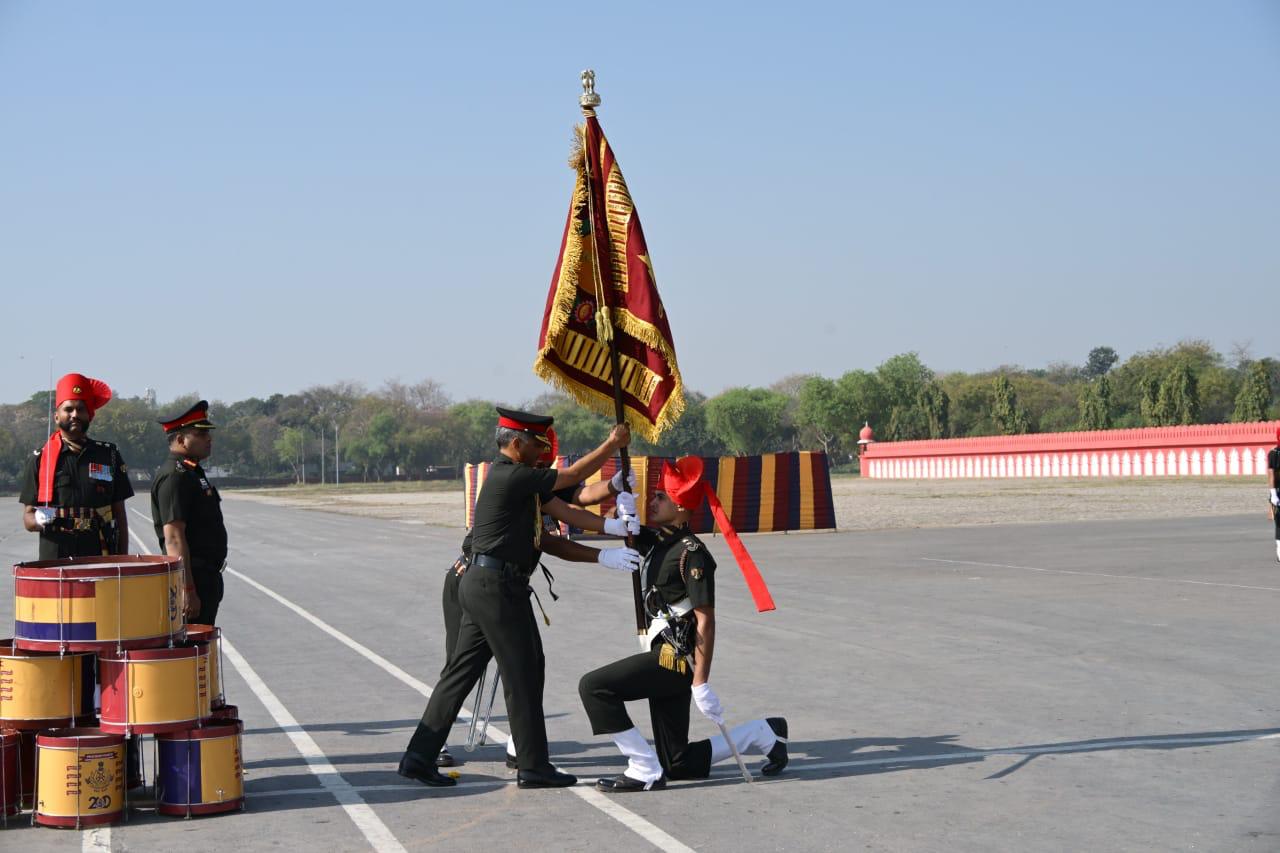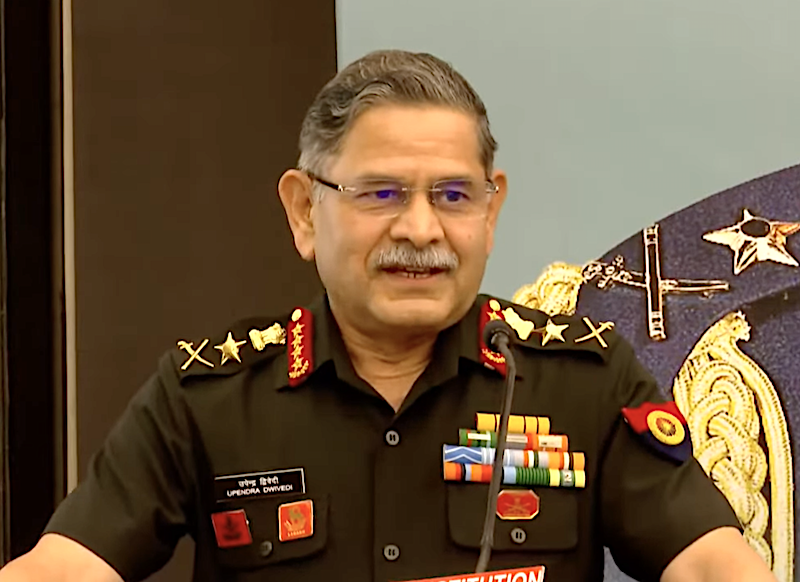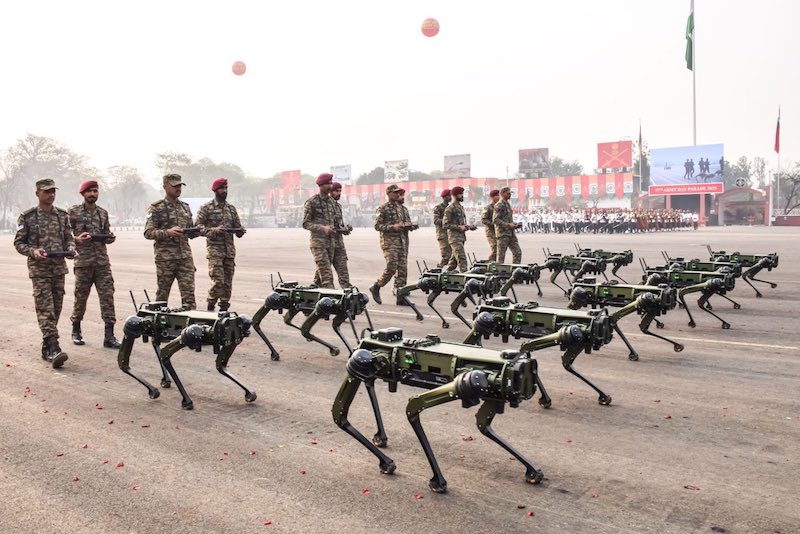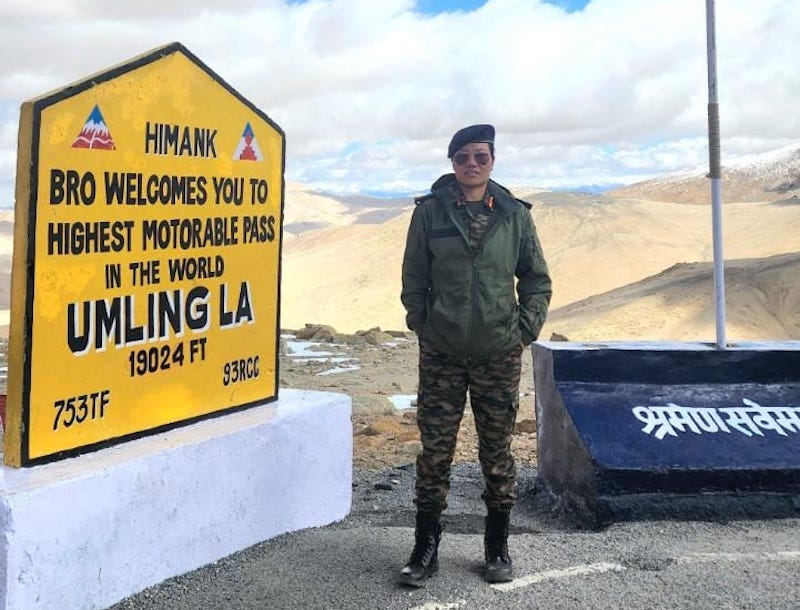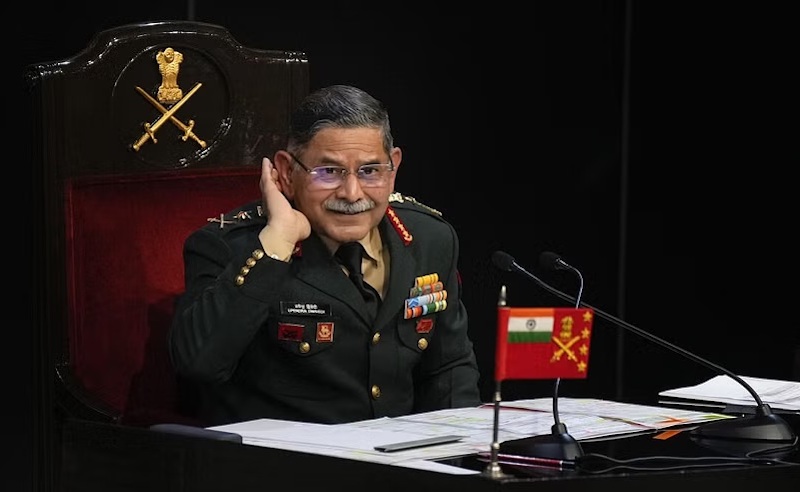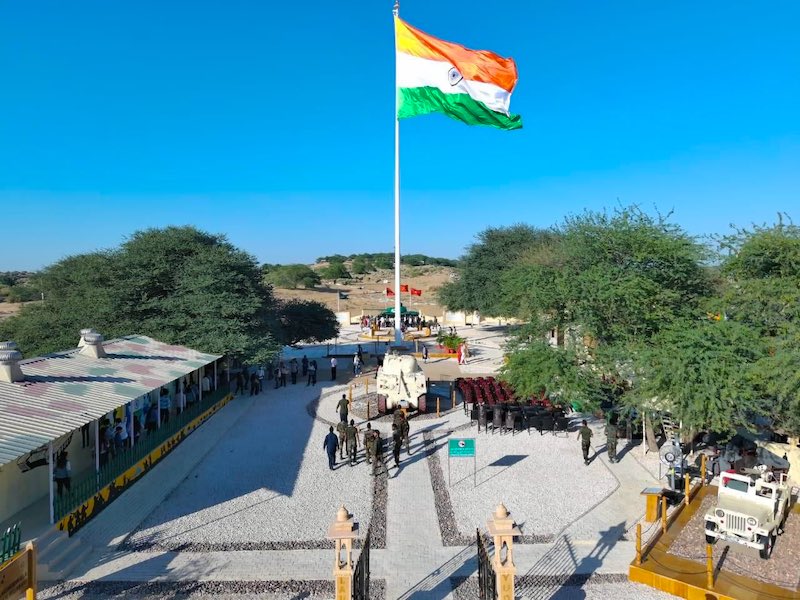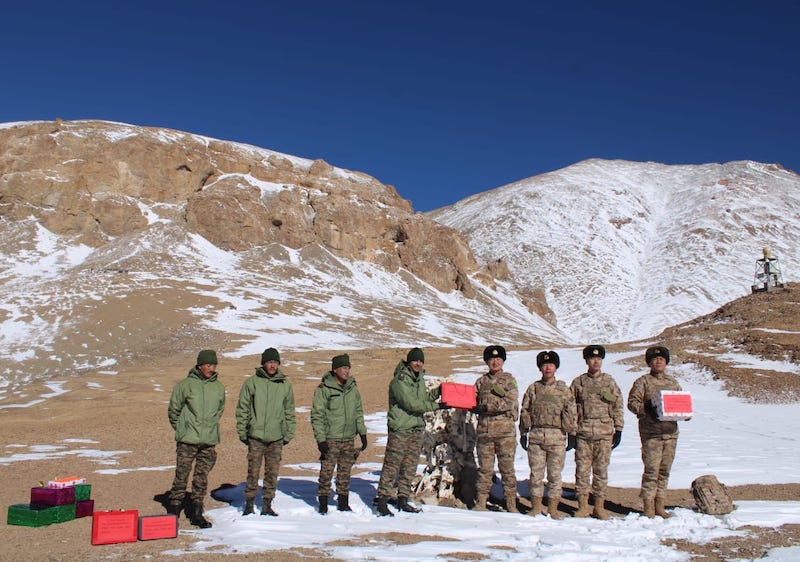 Indian and Chinese troops exchange sweets at a point on the LAC. (Photo: Indian Army)
Indian and Chinese troops exchange sweets at a point on the LAC. (Photo: Indian Army)
New Delhi: The Indian and Chinese armies have restarted patrolling operations at two critical flashpoints – Demchok and Depsang Plains – along the line of actual control (LAC) in eastern Ladakh. This development follows the successful completion of a disengagement process that started on October 23 and concluded on October 29, as India Sentinels had reported.
This marks a significant stride towards de-escalating the tensions that have persisted since the military stand-off that erupted in May 2020, after China’s People's Liberation Army forces encroached into Indian-controlled territory.
On Saturday, Indian troops began coordinated patrolling in Demchok, with operations anticipated to commence shortly in Depsang as well. The Ministry of External Affairs (MEA) spokesman, Randhir Jaiswal, confirmed that this verification patrolling is being conducted as per mutually agreed terms, in accordance with an agreement reached on October 21 during the bilateral talks between the prime minister, Narendra Modi, and the Chinese president, Xi Jinping, on the sidelines of the BRICS Summit in Russia's Kazan.
Earlier, on Friday, Indian and Chinese troops exchanged sweets at several points at the LAC to mark the thawing of ties between the two countries, which also coincided with Diwali – India’s festival of lights.
The agreement aims to restore normality along the LAC after years of heightened military presence and confrontations. The disengagement process involved dismantling the temporary structures established by both sides during the stand-off. This move is expected to give Indian forces access to key patrolling points that had been obstructed by Chinese troops in recent years.
The backdrop of this agreement is rooted in a series of intensive diplomatic discussions that sought to resolve issues stemming from the deadly clashes in Galwan valley in June 2020, which resulted in the deaths of 20 Indian soldiers and at least four Chinese troops. This incident marked a significant nadir in Sino-Indian relations, leading to a substantial military build-up along the border.
In a gesture of goodwill coinciding with the Diwali celebrations, troops from both nations exchanged sweets at various border points along the LAC, signalling a potential thaw in relations following the disengagement. The foreign secretary, Vikram Misri, emphasized that this agreement is the culmination of extensive negotiations aimed at stabilizing bilateral ties and managing peace along the contested border.
While both countries have committed to utilizing existing diplomatic channels to address ongoing concerns, no specific dates have been set for future meetings between their respective special representatives on border issues. These discussions are crucial for ensuring long-term stability and addressing the complexities surrounding the boundary question.
However, observers highlight that this agreement does not signify a full resolution, but rather represents progress in easing tensions in a region critical to the security interests of both nations. Nonetheless, they view the resumption of patrolling at Demchok and Depsang as an important milestone in India-China relations, which may potentially pave the way for further dialogue and resolution of long-standing disputes along one of the world’s most contentious borders.


